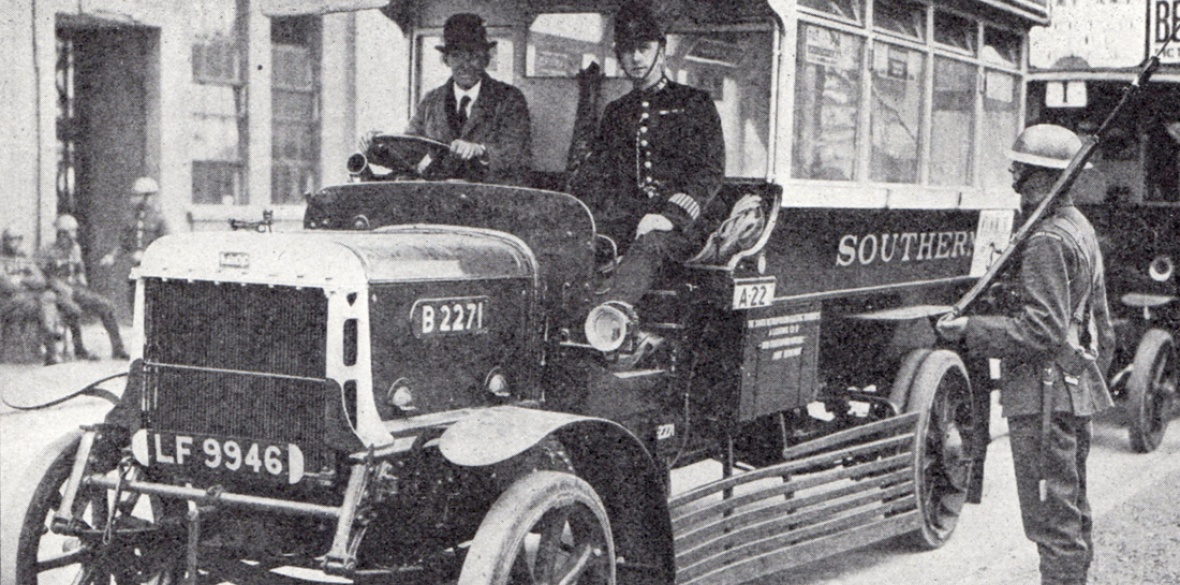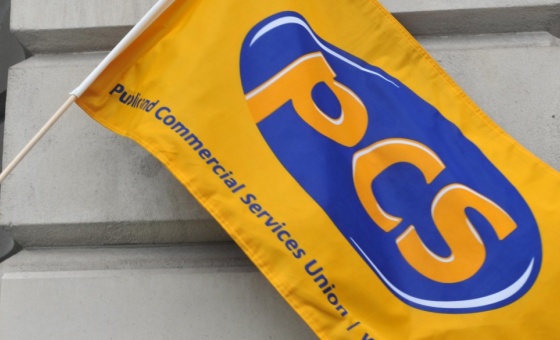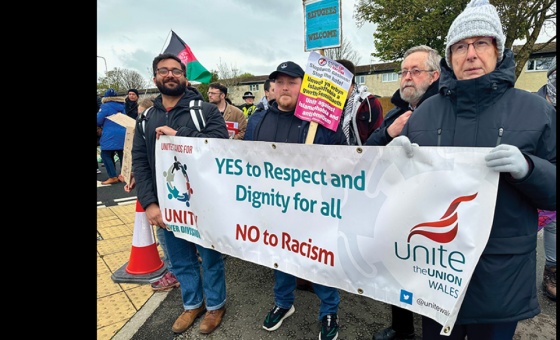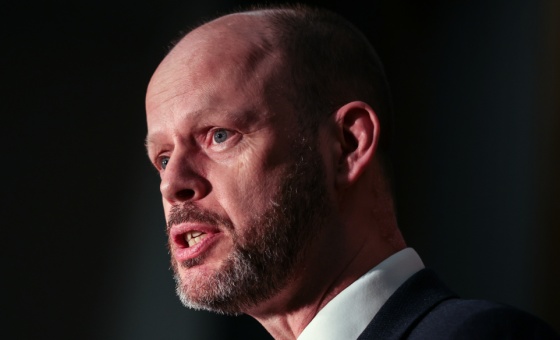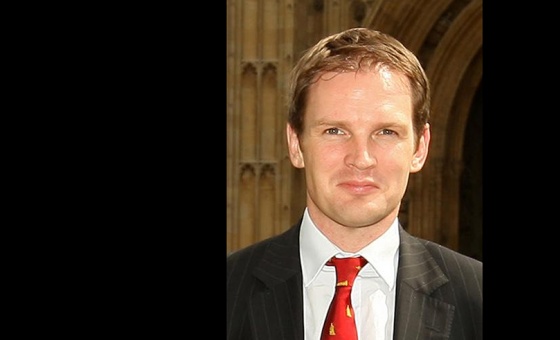This is the last article you can read this month
You can read more article this month
You can read more articles this month
Sorry your limit is up for this month
Reset on:
Please help support the Morning Star by subscribing here
ONE HUNDRED years ago, on January 27 1919, workers in Scotland struck work to secure a 40-hour week. The strike was called by the Scottish Trade Union Congress, Glasgow Trades and Labour Council — then one of the biggest in Britain with 200 delegates — and the Clyde Workers Committee representing the shop stewards’ movement.
It was a political strike. It demanded action by the government to limit hours of work — and thereby to create more jobs and halt the return of mass unemployment. Millions of men were being discharged from the army and tens of thousands of women from the munitions factories.
The longer-term objective was to protect the bargaining power which trade unionists had built up during the full employment of the war years and particularly the power of the shop stewards’ movement.
As such, it was the first of a series of mass political strikes, culminating in the General Strike of 1926, that did much to create the modern labour movement and a mass base for the Labour Party.
Historically, however, it has been widely misinterpreted.
Henry Pelling in his History of the Trade Union Movement saw it as so insignificant as to not warrant a mention. Many have simply focused on the police riot in George Square on Friday January 31 and the overnight arrival of the army. Others have described the strike as a lost opportunity for revolution.
It was none of these things. There was a police riot. The army did occupy. The leaders were arrested. But the strike continued long after “Bloody Friday” and helped change Britain.
On the day after the tanks rolled into Glasgow, the STUC called a conference. By a large majority workplace delegates voted to continue the strike.
The strike went on for the following week — and to the end of the next.
In the meantime some remarkable things happened. The strike was never simply a “Glasgow” strike. Its original base was in the Clydeside shipyards and engineering works.
But it was backed by strike action in the two biggest coalfields, Lanark and Fife, and workers in Dundee, Aberdeen, Rosyth, Leith and Edinburgh.
It ran in parallel with a similar strike for shorter hours in Belfast. And in the second and third weeks strike action spread to England, Birkenhead, Barrow, Bolton and Coventry, and parts of the south Wales coalfield.
In its second week Tube workers in London struck for an eight-hour day, the bus workers came out and by the third week railways in south-east England had ceased to function.
On the Tuesday of the third week London’s radical electricity workers threatened to pull the plugs at midnight.
“This will be taken more than anything,” wrote the acting prime minister Andrew Bonar Law to David Lloyd George at the Paris peace conference, “as a test of the government’s ability to deal with the situation.”
Bonar Law also reported that the King was “in a funk” about the labour situation and demanding Lloyd George’s immediate return.
The government sent naval ratings to take over the power stations. It maintained a hard line against any intervention on hours.
Yet it did change policy — fatefully. That third week of the strike saw the drafting of the King’s speech outlining the government’s post-war programme. This went to the Commons on the day the strike ended.
The government had intended to ditch its wartime promises on reconstruction and deflate the economy to prepare the way for a quick return to the gold standard.
Instead it now announced major programmes for council housing, health provision, education and pensions. It was, Lloyd George commented privately, “insurance against Bolshevism.”
This programme fuelled a post-war boom, maintained full employment for another two years and sustained an increasingly radical trade union movement through to the Councils of Action of August 1920 — which carried forward the organisational lessons of 1919.
On Clydeside itself other remarkable things were happening — in part at least because of the earlier interventions of Willie Gallacher, leader of the Clyde Workers Committee and of the wartime shop stewards’ movement, by then arrested and charged with sedition.
From the beginning Gallacher, as secretary of the Joint Organising Committee, had insisted that the strike could not simply be workplace-based. There had to be organisation in the communities.
At the first mass meeting on the Monday, in St Andrew’s Hall, he called for the establishment of “social committees” in each locality to organise food provision and the withholding of rents.
These committees soon extended to wider forms of organisation and the issuing permits for the permitted transport of goods deemed socially necessary.
Their importance was demonstrated on the Monday after the military occupation. One key objective of the employers and the government was to disperse the mass pickets that blocked roads leading to the yards and factories. Soldiers with fixed bayonets were deployed.
But to no effect. The Glasgow Evening Times reported: “Considerable numbers of women,” some with “children in arms,” replaced the men.
A month before a big majority of Glasgow voters, men and women over 30, had voted for Conservative-Liberal coalition candidates.
Only one constituency out of 15 went to Labour.
In the Glasgow local elections eight months later Labour won over two-thirds of the seats contested. Political attitudes were transformed by the direct confrontation between the military forces of the state and the organised solidarity of local communities.
The strikers finally returned on February 12. By then the Strike Bulletin issued by the Central Strike Committee had achieved a circulation of 20,000.
Its issue for that day concluded thus: “If we go back to work, we do so only to change our tactics … The strike has already then has burst the infamous 47 hours proposal [a reference to the success in Belfast]. As a result workers across the country realise that the 40 hours week is the only practical remedy for unemployment.
“The barriers of craft have gone in this conflict, and henceforth we fight as workers, irrespective of trade or occupation … nevermore will one section by used against another … The strike has taught us our power; has developed our capacity … the knowledge we have gained will not be wasted.”
It was a knowledge that helped change politics in Britain and develop a mass working-class identity.
Today the same spirit is reflected by a left-led Labour Party and, uniting the trade unions and the communities, the trades union councils and the People’s Assembly.
The spirit of Gallacher’s social committees lives on.
John Foster is international secretary of the Communist Party of Britain.
The Scottish Morning Star Campaign Committee is organising two meetings to commemorate the strike: on Monday 28 January at 7pm in Woodside Halls, Glasgow with Jennifer McCarey of Glasgow Trade Union Council, Dave Moxham of the STUC and Tam Kirby of the Scottish People’s Assembly; and on Tuesday February 12 at 7pm in Clydebank Town Hall with Tam Kirby and chaired by Margaret Wood.

